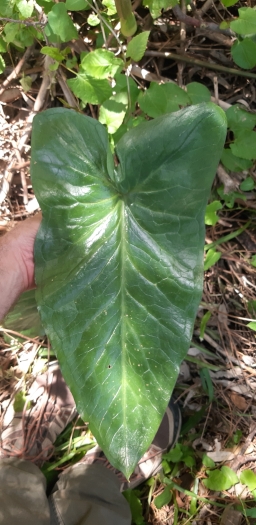Apulian Arum
(Arum apulum)
Apulian Arum (Arum apulum)
/
/

Leonardo Ancillotto
CC BY 4.0
Image By:
Leonardo Ancillotto
Recorded By:
Copyright:
CC BY 4.0
Copyright Notice:
Photo by: Leonardo Ancillotto | License Type: CC BY 4.0 | License URL: http://creativecommons.org/licenses/by/4.0/ | Rights Holder: Leonardo Ancillotto | Publisher: iNaturalist | Date Created: 2023-04-13T14:20:12-07:00 |

Estimated Native Range
Summary
Arum apulum, commonly known as Apulian arum, is a perennial herbaceous plant endemic to the Mediterranean maquis and garrigue habitats of central Apulia, Italy, particularly thriving in calcareous soils at altitudes between 984 to 1312 feet (300 to 400 meters). It is characterized by its tuberous nature, spreading clonally through vertically oriented tubers. The Apulian arum typically produces a single leaf, which is arrow-shaped and glossy green, and a flower structure known as a spadix, which is surrounded by a pale green spathe that may have purple spots. The flowering season occurs in the spring, and while the flowers are not particularly showy, they are unique and interesting in structure.
The Apulian arum is valued for its distinctive foliage and architectural flower spadices, which can add an exotic touch to gardens. It is suitable for cultivation in rock gardens, as a woodland understory plant, or in a Mediterranean garden setting. This species prefers partial shade to full sun conditions and requires well-drained soil. It is relatively low maintenance but should be protected from excessive winter wetness to prevent tuber rot. While not commonly found in cultivation, it can be a conversation piece due to its unusual appearance.CC BY-SA 4.0
The Apulian arum is valued for its distinctive foliage and architectural flower spadices, which can add an exotic touch to gardens. It is suitable for cultivation in rock gardens, as a woodland understory plant, or in a Mediterranean garden setting. This species prefers partial shade to full sun conditions and requires well-drained soil. It is relatively low maintenance but should be protected from excessive winter wetness to prevent tuber rot. While not commonly found in cultivation, it can be a conversation piece due to its unusual appearance.CC BY-SA 4.0
Plant Description
- Plant Type: Herb
- Height: 0.5-1.5 feet
- Width: 0.5-1.5 feet
- Growth Rate: Moderate
- Flower Color: White, Green
- Flowering Season: Spring
- Leaf Retention: Deciduous
Growth Requirements
- Sun: Part Shade
- Water: Medium
- Drainage: Medium
Common Uses
Border Plant, Low Maintenance, Potted Plant
Natural Habitat
Mediterranean maquis and garrigue habitats in central Apulia, Italy
Other Names
Common Names:
Scientific Names: , Arum apulum, Arum nigrum var. apulum,
GBIF Accepted Name: